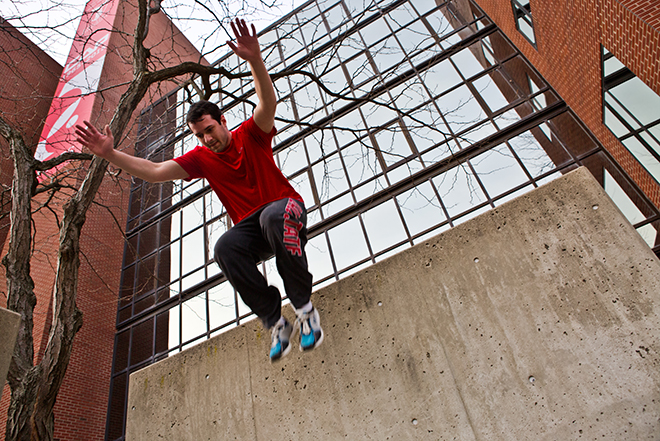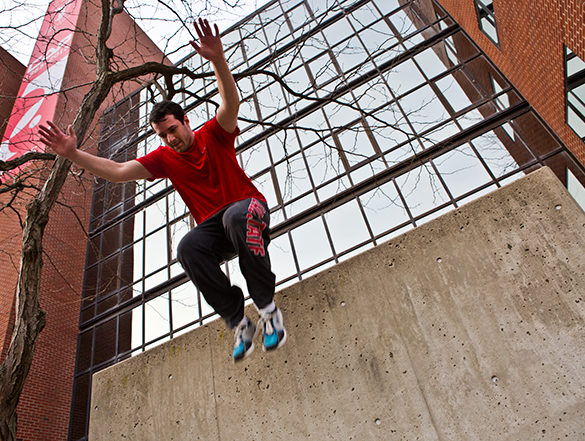
The strength and abilities of the human body can be shocking, with only a few doses of adrenaline and a concrete jungle to navigate. The combinations of these elements give rise to a sport called parkour.
Parkour is an extreme sport rooted in French military training. It originated from a training program for French Special Forces known as “Parcours de combattant”, or “The Path of the Warrior.”
Not to be confused with free running, parkour is the name given to a method of movement where obstacles are traversed with strength, endurance and speed. It may involve walking and jumping on small areas, rails and wall edges, leaping across buildings or vaulting walls.
The World Freerunning Parkour Federation (WFPF) defines it as, “the act of moving from point ‘a’ to point ‘b’ using the obstacles in your path to increase your efficiency.”
“Freerunning is more flowery,” said Ball State junior Nathan Davis, who has been practicing parkour since high school. “If I’ve got an eight foot gap, I’m going to just jump across it; a freerunner would [exert more energy doing a] front flip over it.”
Although parkour is more common in urban environments, Davis explains that this environment is not necessary.
“You can practice most aspects of parkour anywhere, you just have to be respectful of the environment,” Davis said. “If all you have is a park bench, you can still practice your balance, practice your handstand or practice your vault. You have to make do with what you have.”
Parkour legends like Daniel Ilibaca, Tim Shieff or Pip Anderson, make it look easy. But when broken down, parkour is a combination of basic moves such as balancing, running and jumping. These experts consistently practice these basic moves, and over time, build up the strength and endurance to move faster and jump farther.
“I’m not ruling out the possibility of using it in a practical environment,” Davis said, “but I learn parkour because it’s really fun. I like the adrenaline rush. I like seeing progress.”




